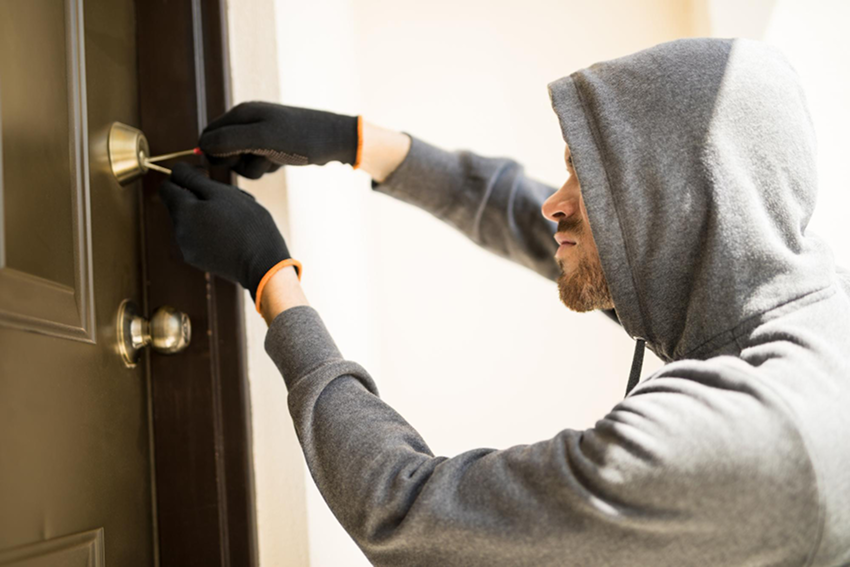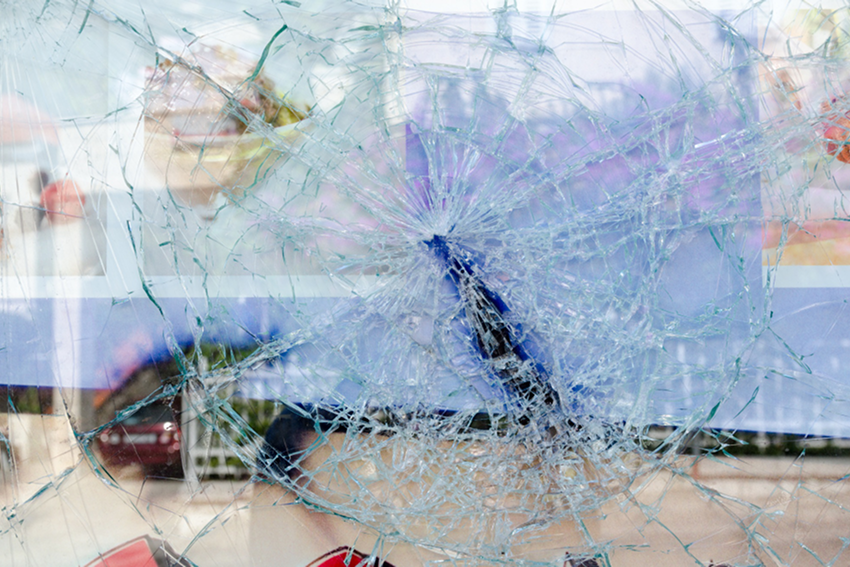Burglary Insurance
Burglary Insurance provides financial compensation for property loss or damage due to theft or attempted burglary, protecting residences and businesses.
- Theft of Property
- Damage to Premises
- Safe Burglary

What is Burglary Insurance?
Burglary Insurance offers financial compensation for losses or damages to property due to actual or attempted burglary. This insurance is pivotal for both residential and commercial entities as it protects against the financial setbacks caused by theft, including the damage burglars might cause during their illegal entry.
What is Covered Under Burglary Insurance?

What are the Exclusions Under Burglary Insurance?
Losses Without Forced Entry
Losses from safes or strongrooms without evidence of forcible entry.
Theft by Insured or Employees
Theft where any insured, employee, or anyone lawfully on the premises is involved.
Damage from Disasters & Events
Damage due to natural disasters, war, seizure by authorities, nuclear activities, and consequential losses like business interruption.
Coverage for Specified Valuables
Valuables unless specifically covered in the Schedule.
Motor Vehicles and Livestock
Motorized vehicles and livestock.

What are the Exclusions Under Burglary Insurance?
Losses Without Forced Entry
Losses from safes or strongrooms without evidence of forcible entry.
Theft by Insured or Employees
Theft where any insured, employee, or anyone lawfully on the premises is involved.
Damage from Disasters & Events
Damage due to natural disasters, war, seizure by authorities, nuclear activities, and consequential losses like business interruption.
Coverage for Specified Valuables
Valuables unless specifically covered in the Schedule.
Motor Vehicles and Livestock
Motorized vehicles and livestock.

Why Should Companies Opt for Burglary Insurance?
Companies should consider Burglary Insurance to mitigate financial disruptions that result from theft. This coverage ensures businesses can recover swiftly, maintaining operational continuity and safeguarding their assets against unforeseen criminal activities.
Key Suggestions to Optimize Your Burglary Insurance Plan
Adequate Coverage
Ensure the sum insured reflects the true value of your assets.
Regular Inventory Updates
Keep a detailed, up-to-date list of all insured items.
Security Measures
Implementing robust security systems can lower premiums and deter theft.

Key Suggestions to Optimize Your Burglary Insurance Plan
Adequate Coverage
Ensure the sum insured reflects the true value of your assets.
Regular Inventory Updates
Keep a detailed, up-to-date list of all insured items.
Security Measures
Implementing robust security systems can lower premiums and deter theft.
Benefits of Burglary Insurance
- Financial Security: Offers compensation for losses, thus mitigating financial strain.
- Peace of Mind: Knowing your property is protected helps you focus on running your business or maintaining your household without worry.
- Flexibility: Policies can be tailored to cover specific items or risks, aligning with personal or business needs.
Claim Procedure in Burglary Insurance
Immediate Notification
Notify the insurer within 14 days of the burglary.
Police Report
File a police report immediately and provide a copy of the FIR and detailed list of damaged or stolen items to the insurer.
Assistance
Provide all necessary information and assistance required by the insurer for claim processing.

Claim Procedure in Burglary Insurance
Immediate Notification
Notify the insurer within 14 days of the burglary.
Police Report
File a police report immediately and provide a copy of the FIR and detailed list of damaged or stolen items to the insurer.
Assistance
Provide all necessary information and assistance required by the insurer for claim processing.
Types of Add-On Covers in Burglary Insurance

Frequently Asked Questions
What distinguishes burglary insurance from a standard property insurance policy?
Burglary insurance specifically covers losses due to forced entry into a property, while standard property insurance covers a broader range of risks like fire, natural disasters, and sometimes theft without forced entry.
Is it mandatory to file a police report to claim burglary insurance?
Yes, filing a police report is essential to substantiate your claim as it provides proof of the incident and details of the items stolen or damaged.
Can I get coverage for items outside my premises?
Generally, burglary insurance covers items within the insured premises. Coverage for items outside can be arranged but might require additional endorsements or a separate policy.
How do insurers determine the premium for burglary insurance?
Premiums are typically based on factors like the value of insured items, location of the property, security measures in place, and the claim history of the policyholder.
Does burglary insurance cover damages caused by burglars during a break-in?
Yes, most policies cover physical damage to the property and its contents caused by burglars during the theft.
What documentation is required when filing a claim for burglary insurance?
You’ll need to provide the police report, a list of stolen or damaged items, proof of ownership, and any other documentation your insurer may require.
Are there any preventive measures that can reduce my burglary insurance premiums?
Installing security systems like alarms, CCTV cameras, and strong physical locks can reduce your risk profile and potentially lower your premiums.
What is the typical process for settling a burglary insurance claim?
After filing a claim with necessary documents and a police report, an adjuster will assess the damage or loss. The claim is then processed based on the terms of the policy and the adjuster’s report.
Can I increase my coverage limit midway through the policy term?
Yes, you can usually increase your coverage limit, but it may require a policy review and additional premiums.
What happens if I undervalue my property in the burglary insurance policy?
Undervaluing your property can lead to underinsurance, where you might not receive sufficient compensation to cover the full extent of your loss in the event of a burglary.
Is the Police Final Report necessary for claim settlement in Burglary Insurance?
Yes, the Police Final Report is necessary for claim settlement in Burglary Insurance, along with the First Information Report (FIR). However, a waiver of the Police Final Report may be obtained in the proposal from the insurer, subject to an additional premium and specific conditions.
Does the customer have the onus to prove the incident?
Yes, under Burglary Insurance, the onus to prove the incident typically falls on the insured. The customer must provide sufficient evidence, such as the police report, details of the stolen or damaged items, and any other relevant documentation that supports the occurrence of the burglary.
Is forceful entry an essential element in Burglary Insurance?
Yes, forceful entry is an essential element in Burglary Insurance. The policy covers losses from incidents where there is evidence of forcible entry to or exit from the premises.
Is underinsurance applied in Burglary Insurance?
Yes, underinsurance is applied in Burglary Insurance. If the property insured is valued higher than the sum insured at the time of a claim, the insured is considered to be their own insurer for the difference and will bear a proportionate part of the loss.
Is depreciation applied in Burglary Insurance?
No, depreciation is generally not applied to claims under Burglary Insurance. The compensation is usually based on the value of the items at the time of loss, without reducing for depreciation, provided the sum insured reflects the actual current value of the items.
What is First Loss Cover in Burglary Insurance?
First loss cover in Burglary Insurance allows the insured to cover a fraction of the total asset value at a location, assuming not all assets will be stolen at once. This option reduces premium costs by setting a limit on the maximum value likely to be stolen in a single burglary.
Is 24×7 security of premises mandatory for getting Burglary Insurance?
24×7 security of the premises is not mandatory for obtaining Burglary Insurance unless specifically required by the terms of the policy. However, implementing robust security measures can still be beneficial for potentially lowering premiums and enhancing policy approval by demonstrating reduced risk.
What assets can be covered in Burglary Insurance?
Assets covered under Burglary Insurance typically include contents such as furniture, fixtures, equipment, stock, and reasonable costs incurred for restoring damaged paper files, electronic data, and cleaning up the premises.
What assets cannot be covered in Burglary Insurance?
Items like valuables (unless specifically covered), motorized vehicles, and livestock are generally not covered.
What types of Burglary Insurance are available?
Standard Burglary Insurance Policy: Covers loss or damage to property within the insured premises due to burglary or attempted burglary.
First Loss Burglary Insurance Policy: Covers a specified portion of the total value of assets, assuming partial loss.
Stock-specific Policies: Including Floater Burglary Policy, Declaration-based Burglary Policy, and Floater Declaration Burglary Policy, which are designed for stock coverage across multiple locations with periodic adjustments.
How does one fix the sum insured under Burglary Insurance?
Assess Assets: Evaluate all assets within the insured premises, including furniture, fixtures, equipment, and stock.
- Determine Market Value: Calculate the replacement value of each asset.
- Total Sum Insured: Sum up the values of all assets for the total sum insured.
- First Loss Policy: If applicable, decide the percentage of the total value to insure, assuming partial loss.
- Stock-specific Policies: For floater, declaration, or floater declaration policies, consider the value of stock at multiple locations and adjust based on periodic declarations.
- Consult Insurer: Confirm the sum insured with your insurer to ensure adequacy and compliance with policy terms.
If I insure for a higher value, will I get a higher claim amount?
No, insuring for a higher value than the actual worth of the assets will not result in a higher claim amount. In the event of a claim, the insurer will only pay the actual loss incurred, subject to the policy terms and conditions. Over-insuring will only lead to higher premium payments without any additional benefit in the claim amount.
Can items like jewelry, ornaments, and artworks be covered by the Burglary Insurance policy?
Yes, items like jewelry, ornaments, and artworks can be covered under a Burglary Insurance policy, but they typically require specific mention and coverage in the policy schedule. These items are usually categorized as valuables and might not be included under standard coverage unless specifically insured.
What is the relevance of salvage in Burglary Insurance?
In Burglary Insurance, salvage refers to the remaining value of property or goods after a burglary incident. Its relevance includes:
- Recovery and Reduction of Loss: Salvage helps reduce the overall loss amount by taking into account the value of any recoverable items or materials that were not completely destroyed or stolen.
- Claim Adjustment: The insurer considers the salvage value when adjusting the claim amount. The total compensation will be the actual loss minus the salvage value.
- Insurer’s Rights: The insurer often has the right to take possession of salvageable items after settling a claim. This helps the insurer recover some costs by selling or repurposing the salvaged goods.
What is a deductible in Burglary Insurance?
In Burglary Insurance, a deductible is the amount the insured must pay out of pocket before the insurance coverage kicks in. It is a fixed sum or a percentage of the claim amount that the policyholder agrees to bear in the event of a loss. The purpose of the deductible is to:
- Reduce Small Claims: Discourage filing minor claims, thereby helping keep premiums lower.
- Share Risk: Ensure the policyholder shares in the risk, which can lead to more cautious behavior and better asset protection.
- Lower Premiums: Higher deductibles generally result in lower insurance premiums.
Can Burglary Insurance be purchased for less than one year?
Yes, Burglary Insurance can be purchased for less than one year. Short-term policies are available for specific needs like events, temporary relocations, or seasonal operations. Terms and premiums may vary, so consult with the insurer for details.
Will Burglary Insurance cover premises on rent?
Yes, Burglary Insurance can cover premises on rent. Both tenants and property owners can purchase burglary insurance to protect their contents and property within the rented premises. The policy typically covers loss or damage to the insured contents due to burglary, regardless of whether the premises are owned or rented.
What is the meaning of Occupancy in Burglary Insurance?
In Burglary Insurance, “Occupancy” refers to the usage and status of the insured premises, specifically whether they are occupied or unoccupied. The occupancy status is significant because:
- Risk Assessment: Occupied premises generally have a lower risk of burglary compared to unoccupied ones, as there is a higher chance of deterrence or immediate response to an intrusion.
- Policy Terms: Insurance policies often have specific terms and conditions related to occupancy. For example, there may be clauses that limit or exclude coverage if the premises are unoccupied for an extended period (typically defined, such as 7 or more consecutive days).
- Premium Calculation: The occupancy status can influence premium rates. Unoccupied premises might attract higher premiums due to the increased risk of burglary.
Shield Your Property from Theft and Loss
Protect your business and assets with Burglary Insurance from Go Insure India. This policy provides financial compensation for losses or damages caused by theft or attempted burglary, ensuring peace of mind and uninterrupted operations for homes and businesses alike.

















